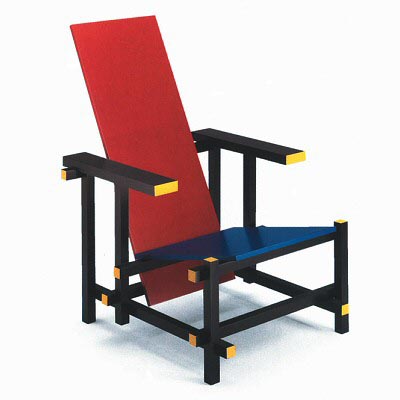Modernism as defined by the reading and the dictionary is the reducing to it’s most expressive form. However, the author goes on to write that there is never really just a single truth, as modernism is not applicable for every single situation.
For me, i’ve also agree that there “is certain arrogance in the idea that one can develop a universal methodology that works in every problem”. It sounds very inquisition-y to me hehe. For instance, reduction and simplicity may not be able to solve all problems. Like, for instance, the De Stijl Chair.

However, there are some parts of modernism that i also believe in. And one of it is the aspect of accomplishing the intended task. For me, i feel that this is where designing with a purpose comes in, which brings me back to my Design Thinking class. Could that be an aspect of Modernism being magnified so that we can study design problems in depth? V interesting.
Another one is not to imitate reality. For me, i can agree to this to a certain extent. Because i am also tired of seeing designers trying to create images of things that are close to reality, which at the end of the day is very pointless because it is not interesting and doesn’t. In the article, it says “Life is erotic; Modernism doesn’t carry that.” That is true in the article’s definition of modernism, which basically says that modernism is “all work no play makes jack a dull boy”. Basic shapes can only last for a period before the graphics become very exhausted and played out.
However, for me, while i agree that you’re not trying to imitate reality here, making the familiar unfamiliar is what makes your designs unique in a way. For example, the Japanese design movement Wabi Sabi works with object we are familiar with and embraces it’s imperfection. It’s very minimalist, but very organic.

This, compared to the De Stijl chair, feels more homely and human like, instead of having a “fake human” design.
Being a digital age baby and post-post modernism (?) adult, I find that the philosophy behind modernism is still very strong and timeless: to design with a purpose, to accomplish the task at hand. But I think it’s time to start looking at more human-like elements in our designs.
Readings:
Bierut, Michael. Looking Closer. Allworth, 1997
P43-49 Some thoughts on modernism: Past Present and Future by Milton Glaser, Ivan Chermayeff and Rudolf deHarak


